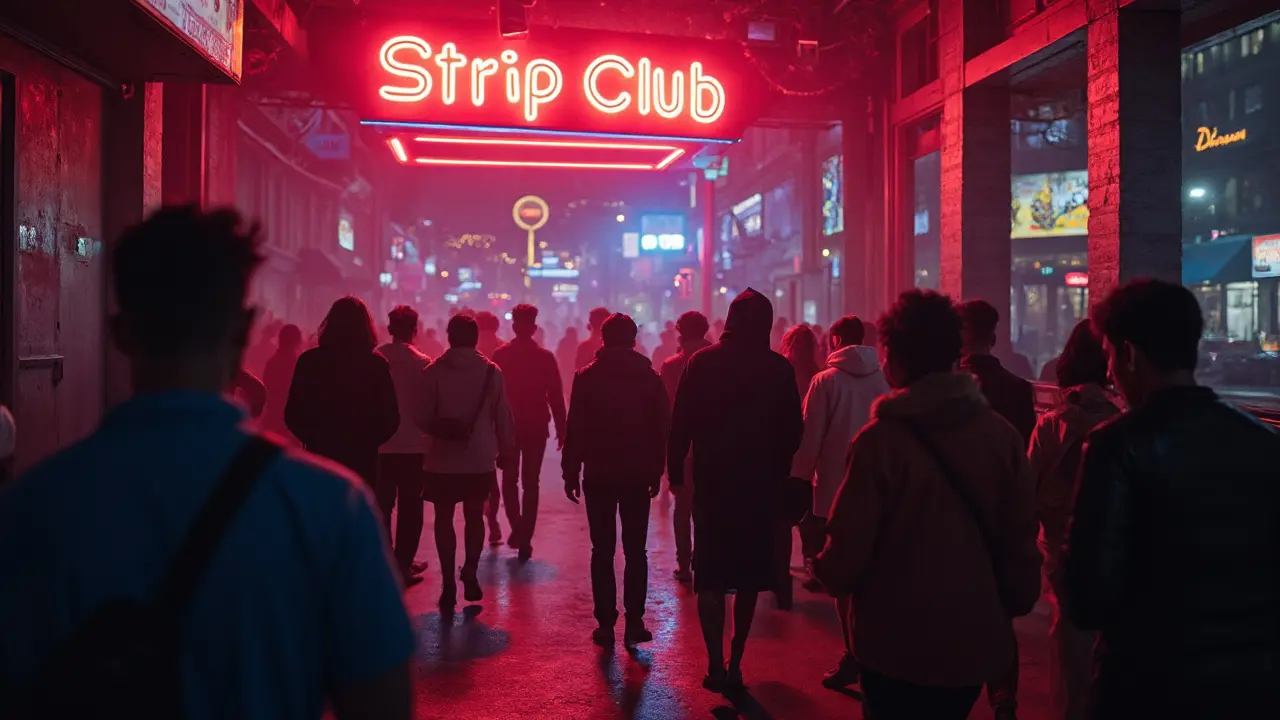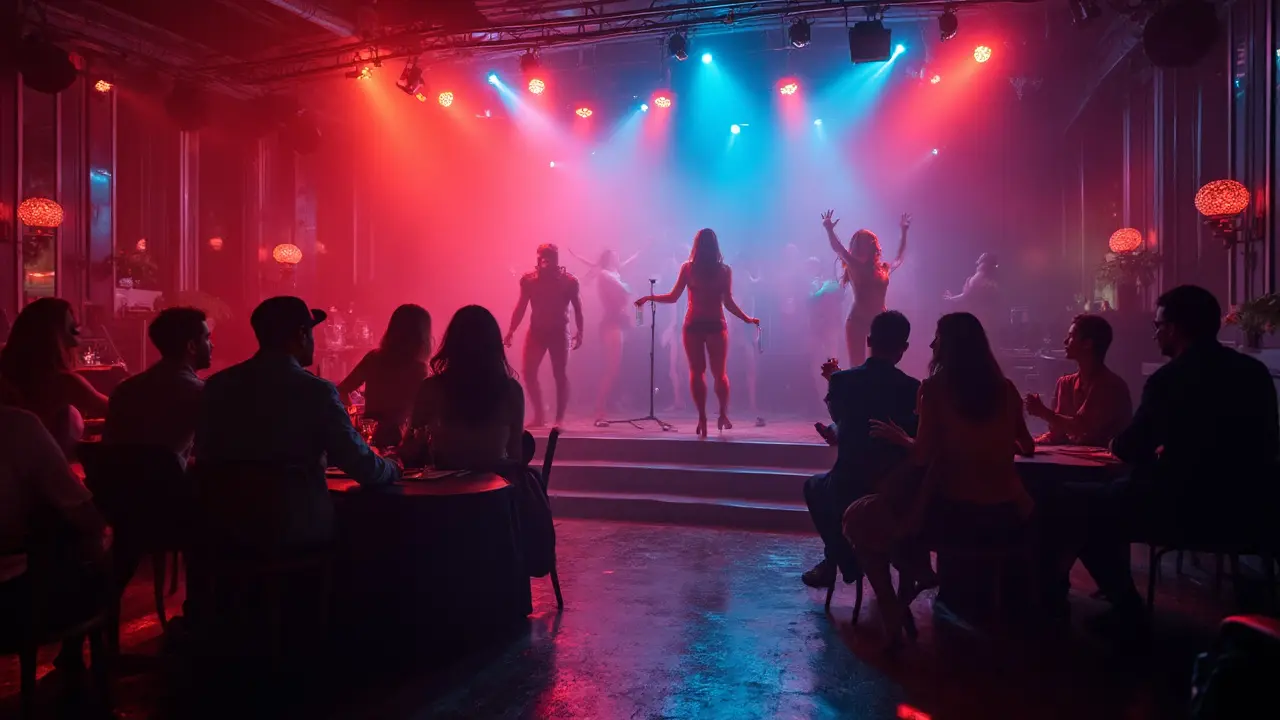Strip Club Guide – Your Map to the City’s Nightlife Pulse

If you’ve ever wondered what actually happens inside a strip club, you’re definitely not alone. You might picture wild parties and crazy scenes right out of a movie, but the real thing is a lot more chill—and a lot less mysterious than you’d think.
Most places have a simple process at the door: check your ID, pay the cover charge, and you’re in. Some clubs even have bouncers who act like the unofficial gatekeepers. They aren’t there to intimidate; they just keep everything running smoothly and make sure everyone plays by the rules. As soon as you step inside, you’ll notice it’s not just about the stage. There’s usually a bar, waitstaff, and a vibe that ranges from high-energy to almost lounge-like, depending on the spot.
One thing that surprises first-timers? Strip clubs aren’t lawless free-for-alls. They actually have tons of unwritten (and written) rules—especially when it comes to tipping, taking photos, and respecting the dancers. Ignore those, and you’ll stick out fast. The scene might feel intimidating if you’re new, but knowing what to expect instantly makes it less awkward and way more fun. Let’s get into what you really need to know to have a good time—without looking like a total newbie.
- What Really Happens Inside
- Strip Club Etiquette: Do’s and Don’ts
- Money Moves – Budgeting Your Night
- Finding the Right Club for You
What Really Happens Inside
Forget the wild movie scenes. Walk through the door of most strip clubs and you’re stepping into a spot with its own set of rules and routines. There’s a stage, usually front and center, where dancers perform their main sets. These are called stage shows, and every club schedules them differently—some rotate dancers every ten minutes, some keep the same performer up for a couple of sets if the crowd’s into it.
The dancers aren't just up there for tips—they’re pros at reading the room. They work their way around the club after their stage shows, chatting with guests, taking drink orders, or offering more private experiences like lap dances or VIP room time. Here's a quick look at what actually goes down:
- Stage Performances: Dancers take turns, with customers tossing cash directly onto the stage as appreciation.
- Lap Dances: These happen away from the main crowd, in a designated spot or sometimes right by your table. Clubs post prices clearly, usually per song.
- VIP Areas: Some clubs offer private rooms for a more personal experience, with higher prices but extra privacy and better service.
- The Bar: Drinks flow—from water to cocktails—but be ready: prices are typically higher than your average pub.
Want numbers? In the U.S., an average strip club goer spends about $100-$300 a night, depending on location. A recent 2023 survey of club owners showed that Friday and Saturday bring in the biggest crowds and tips, while Mondays are dead quiet.
| Type of Service | Average Cost (USD) |
|---|---|
| Cover Charge | $10-$30 |
| Stage Tips | $1-$5 per song |
| Lap Dance | $20-$50 per song |
| VIP Room | $150-$500/hour |
Don’t assume every club is the same. Some are all about the party vibe with loud music and strobe lights. Others feel almost like a chill lounge. Most are strict about age (21+ always) and security. No matter where you go, the dancers are in control. Respect gets you better conversation and more attention.
Strip Club Etiquette: Do’s and Don’ts
If you want to have a solid night out, you gotta know the basics of strip club etiquette. Nothing kills the mood faster than someone breaking the unspoken rules, so here’s what’s up.
- Always tip the dancers. Even if you’re just watching the stage and not buying a private dance, tossing a few dollars is standard. Most dancers depend on tips more than their paycheck.
- Never touch unless you’re told it’s allowed. Most clubs have a strict “look but don’t touch” rule, and getting grabby is the fastest way to get tossed out.
- Keep your phone in your pocket. Filming or taking photos will get you in trouble instantly. Bouncers watch for this.
- Respect the staff. Bartenders, DJs, and waiters make the night happen. Be cool, and you’ll get better service.
- If you want a private dance, ask politely. Don’t shout or act entitled—dancers appreciate guys who understand boundaries.
“Respect is the name of the game—dancers notice who’s a jerk and who’s a decent customer. The regulars who treat us well always have the best nights.”
—Lexi, dancer at a top NYC club
Most clubs also have a dress code. You don’t have to show up in a tux, but leave the flip-flops and dirty shirts at home. If you’re not sure what’s okay, check the club’s website or social pages.
And here’s a stat most people don’t know: according to a well-shared club survey, around 70% of customers who get kicked out did so for breaking phone or touching rules, not for being loud or drunk.
Follow these basics and you’ll fit right in. You’ll also make the dancers’ jobs easier—and trust me, that makes for a better night for everyone in the strip club.

Money Moves – Budgeting Your Night
Walking into a strip club with a plan is the difference between a fun night and an awkward morning checking your bank account. Here’s how to keep your wallet happy and your experience smooth.
First things first: most clubs charge a cover at the door. This can range from $10 to $50, depending on if it’s a slow Tuesday or a hype Saturday night. Big-name clubs tend to charge more. Ask before you go or check online; some spots even offer cheaper rates if you show up before a certain time.
Drinks will cost more than your regular dive bar, no doubt. It’s not weird for a basic beer to run you $8-10, and you can double that for cocktails. If you’re buying drinks for a dancer, those sometimes come with an added price tag—think $20 or up. Expect bottle service and VIP tables to start around $100 and head north fast.
When it comes to tipping, singles are your best friend. It’s pretty standard to tip at least $1 per stage dance, but regulars will throw $5 or more for a standout performance. Lap dances? Those can go $20-30 per song, and more in higher-end clubs. Don’t forget to tip your bartender and waitstaff, too.
Here’s a quick look at where your cash might go:
| Expense | Typical Range |
|---|---|
| Cover Charge | $10 - $50+ |
| Drinks | $8 - $20 each |
| Lap Dance | $20 - $30 per song |
| Bottle Service | $100 - $500+ |
| Tipping | $1 - $5+ per dance |
Pro tip: Bring cash, mostly in small bills. ATMs in clubs charge wild fees, sometimes $10 per withdrawal, and they love to spit out only $20s or $100s. Avoid credit cards if privacy matters, as the charge rarely shows up as anything discreet.
If you’re going with friends, figure out ahead of time if you’re splitting bottles or dances—don’t have those talks in front of the staff or dancers. Set your own hard limit and stick to it. Having a plan helps you relax and enjoy the night without that gnawing money stress in the back of your mind.
Finding the Right Club for You
Not every strip club will vibe with your personality or expectations. Some clubs focus on glitz and big stage shows, while others are low-key with a neighborhood bar feel. The trick is to pick a spot that fits your mood, your budget, and honestly, your comfort level.
Start by checking out some local reviews online. Websites like Google, Yelp, and even Reddit threads can give you the real scoop, including what the crowd is like on different nights and how strict the dress code really is. If you see a lot of folks talking about aggressive bouncers or overpriced drinks, that’s a red flag unless you’re into high-stake adventures. Smaller clubs can be surprisingly welcoming—sometimes even safer for newbies—while big well-known names in cities like Las Vegas or Miami usually mean bigger crowds and higher prices.
It’s not just about atmosphere—location matters a ton. Downtown clubs might be close to other bars and easy to get to, but parking can be a pain. Suburban spots often have free lots but might be trickier to reach late at night if you’re relying on rideshares. Always double-check if there’s a cover charge and if they’re cash-only. You don’t want to end up scrambling for an ATM at midnight with a line of partygoers behind you.
Here’s a checklist if you want to avoid rookie mistakes:
- Know your dress code. Some clubs are chill, others demand collared shirts and nice shoes. Athletic wear or hats almost never fly.
- Check the drink and dance prices beforehand. Some places put their menu online, and you don’t want sticker shock.
- Ask about specials or theme nights. Tuesdays might be slow but cheaper, while weekends are packed and pricier.
- Look for diversity and vibe. Clubs with a mix of customers tend to feel more welcoming, especially for first-timers or couples.
- Talk to friends or coworkers who’ve gone before—they’ll give advice that isn’t filtered or sugarcoated.
If you’re a numbers type, here’s a quick look at how entry and drink prices can run in the U.S. (Based on club data from 2023):
| Club Type | Average Cover Charge | Average Drink Price |
|---|---|---|
| Neighborhood/Local | $10 | $7 |
| Mid-Tier City Club | $20 | $10 |
| Top-Tier Club (Vegas/Miami) | $40 | $15 |
The bottom line: There’s a club for everyone, but the ‘best’ one is the place where you actually feel comfortable. Take a second to do your homework—it pays off in way less awkwardness and way more fun.
